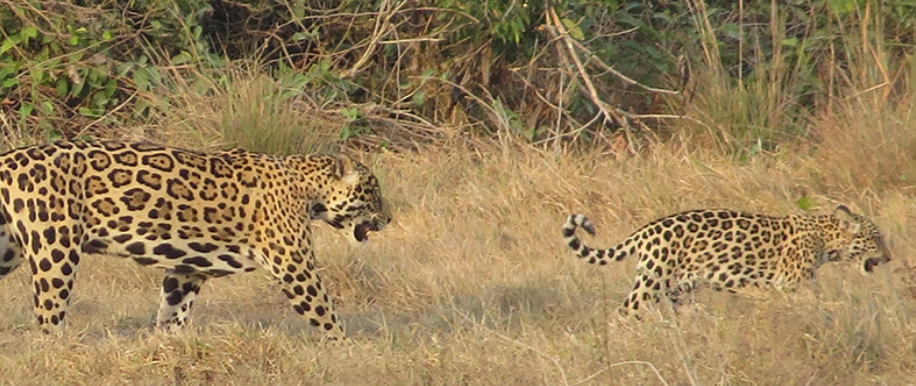As ecotourism returns, Panthera, the global wild cat conservation organization, has compiled a list of five destinations worldwide where travelers are almost guaranteed to encounter jaguars, leopards, pumas, tigers, and other big cats in the wild — while helping both the animals and community residents alike bounce back from the impact of the pandemic.
The lesser-known destinations range from jaguars in Colombia’s Llanos region to leopards iin South Africa’s Sabi Sands to pumas in Patagonia.
Panthera has achieved conservation success around the world by recognizing that one of best ways to protect wild species is to help local communities benefit from them. As big cats stop seeing humans as a threat, they become more visible in the wild, which in turn attracts more tourists. The list below my signature includes five of Panthera’s biggest success stories.
Jaguars in Brazil’s Pantanal

Photo by Steve Winter
Panthera’s Pantanal Jaguar Project in Brazil is a shining model for big cat conservation, demonstrating how scientists can mitigate conflict between humans and wild predators by implementing eco-tourism, livestock vaccinations, and other initiatives benefiting local communities. The world’s largest tropical wetland, the Pantanal is home to the highest concentration of jaguars on earth, and visitors might catch sight of the big cats swimming the Cuiaba river, hunting prey, or even venturing out with cubs.
Jaguars in Colombia’s Llanos

Photo by Steve Winter
Modeled after their community-based approach in the Pantanal, Panthera’s work in Colombia’s Llanos, a vast tropical grassland plain east of the Andes, is on track to replicate its success. Thanks to Panthera’s two-pronged efforts — helping ranchers protect livestock from jaguars without killing them, and training locals to be jaguar tour guides — visitors are twenty times more likely to see a jaguar now than in 2016, and tourism has doubled in a region still recovering from Colombia’s turbulent past of drug trafficking and civil war. Like the Pantanal, the Llanos are part of Panthera’s Jaguar Corridor Initiative, an ambitious conservation program that seeks to preserve the genetic integrity of jaguars by protecting them across their entire six million square kilometer range from Mexico to Argentina.
Pumas in Patagonia

Photo by Angela Ambrosini
Nicknamed “the end of the world,” Patagonia — the southern parts of Chile and Argentina — offers an opportunity to see pumas against a backdrop of granite spires, sweeping vistas, glaciers, and pampas. Ecotourism is relatively new to the region, where pumas and ranchers have long been in conflict. Over the last few years, Panthera’s Puma Program has been working with tourist ranches to create an ethical standard for puma tourism. The relationship is mutually beneficial: in return for allowing Panthera to set the many camera traps needed to monitor puma populations, Panthera shares data that helps landowners plan puma-sighting tours.
Leopards in South Africa’s Sabi Sands

Photo by Marike Louw
Sabi Sands Game Reserve boasts the highest concentration of big game in South Africa and also one of the most habituated, meaning tourists enjoy frequent and close wildlife encounters. Famous for its amazing leopard sightings, the reserve is helping Panthera with one of the most comprehensive long-term leopard studies ever undertaken. Working with guides from the reserve’s photo-tourism lodges, the Sabi Sands Leopard Project has monitored more than 600 leopards over the last 35 years — a unique dataset that provides important insight into the lives of leopards, as well as an essential baseline that can inform future conservation strategies.
Tigers in Ranthambore National Park

Located in northern India, Ranthambore National Park is reputed to have the least shy tigers in the nation; in fact, Panthera doesn’t run a conservation program within the park because its thriving wild tiger population doesn’t require an intervention. But Alvis Lazarus, a Panthera Partner Wildlife Photographer who lives and works in India, can testify that it’s one of the best places in the world to photograph tigers; in one trip, he says, a visitor can capture the animals against a surprisingly diverse range backdrops, from mountains to lakes to grassy plains.
Feature photo at the top by Panthera







